Treatment Information
- People who are treating, or planning to treat their trees, need to register that information with the City. This is done by calling 211.
- The most effective treatments for Emerald Ash Borer (EAB) are applied by commercial applicators (professional businesses/arborists). They are trained to treat trees, have the equipment needed for proper application, and can acquire chemicals with higher concentrations needed to properly treat your tree.
- You will want to determine if you have a tree worth investing treatments in for EAB (arborists can help with that).
- If not, it needs to be removed/cut down. For more information, see the "HelpSheets - EAB Sioux Falls Plan for Street and Park Tree Removal" and "HelpSheets - EAB Tree Disposal".
- Then, consider others factors including cost and time of year. An unknown factor is how well a particular tree will respond to/take up the chemicals used to treat it.
- The cost of treating a tree generally ranges from $150.00 - $350.00 per treatment for trees 10 - 25 inches in diameter.
- Treatment will need to be repeated every 2 years depending on what product is being used and the application method. After the outbreak is over, approximately 10 - 12 years, the period between treatments can lengthen to 4 years or more for the life of the tree.
- You will want to determine if you have a tree worth investing treatments in for EAB (arborists can help with that).
- Things to keep in mind:
- Treatments are effective, if they are done properly. Therefore it is recommended that you work with a professional
- If the tree dies while the homeowner is treating it, they will be responsible for removal of the tree (either themselves or by paying a company to come and remove it).
- To see a list of arborists go to www.siouxfalls.org/eab and along the left hand side under "Forestry", click link for "Licensed Arborists That Treat Insect Disease Problems".
Arborists
- For a list of Arborists, visit www.siouxfalls.org/eab and on the left hand side, under "Forestry" click link for "Licensed Tree Trimming Arborist List".
- If the tree has been treated by an arborist, they will put a tag on the tree (sometimes it will be silver). This means the tree has been treated
Removal by the City of SF ("Street" Trees and Trees in Parks)
- Tree removal – who is responsible for what?
- The City is going to take care of the following:
- The City of Sioux Falls will be taking care of tree removal for "public trees" (located on boulevard/parking strip; sometimes called street trees). The plan involves removing all Ash trees from the parking strips and City parks over the next several years. They will remove the tree and associated debris (Work will be done by contractors. Dates will be dependent on the contractor’s schedule.)
- Grinding stump and hauling away excess grindings (Stump grinding will be completed by city crews after the trees are removed by the contractor)
- There will be no cost to abutting property owners
- The property owner is responsible for the following:
- Replacing stump grindings with fresh topsoil and planting new grass
- Replanting a tree if desired. Must follow the "Parking Strip Guidelines" found at http://www.siouxfalls.org/parks/forestry/street-trees
- The City is going to take care of the following:
- Contracts for removal:
- City awards contracts to licensed arborists who coordinate to do the removal each prior, either prior to Memorial Day, or after Labor Day (no trees are removed/cut between Memorial Day and Labor Day).
- Timeline:
- This is a 10-year plan. Different parts of the city will be targeted each year for removal; and the city will circle back to areas they have already been in a few years to thin out more ash trees. If the tree is not registered as being treated at that time, it will be marked for removal. If a homeowner changes their mind (ie. has been treating a tree, and at some point down the road decides to stop treating the tree, the City of Sioux Falls' intention is to continue this program and if a tree is not being treated in the future, it will become a candidate for removal.
- Selection process:
- It is possible that certain trees, even within the initial area, might not get marked for removal. The city has taken inventory and created a "condition rating" for each tree, and the worst ones are being removed first. The reason for thinning the trees in this way is because the insect spreads slower when there are nearby ash tree(s).
- Trees were/are selected for removal based on the City's Street Tree Inventory in that area. Trees in the worst condition are selected first as they will be the most susceptible to an attack from EAB. Then trees are selected that would pose a greater risk to the public based on where the tree was located. Roughly 1/3 of the ash trees in an identified area will be removed in any given year. (FYI - 1/3 does not mean every 3rd tree gets marked.)
- Marking:
- Different parts of the city will be targeted each year for removal; the whole process will take 10 years. Trees will be marked with blue spray paint.
- Crews will mark trees with the number corresponding to the year it will be removed (ie. “9”’s, will be removed in 2019, “0"s will be removed in 2020, etc).
- Communication to homeowners:
- A letter will be sent to all property owners that have a tree, within a removal area, that the City intends to remove. They should receive the letter prior to the tree being marked.
- Both of these pieces of communication reference calling 211 Helpline Center if they intend to or are currently treating their trees.
- Contractors will communicate directly with property owners when necessary.
Removal info for Property Owners
- Property owners that are not treating their Ash trees (other than those on the parking strip/boulevard (city will remove those public trees)), are encouraged to begin planning for the removal of Ash trees. They will need to anticipate and plan for removal costs.
- Why remove it? Because it will become infected and then the structural integrity of the tree is compromised. Property owners will want to avoid standing dead trees. If not removed (and not treated) the tree will become brittle, and could pose a safety issue/hazard.
- For trees on private property (areas other than the parking strip):
- Trimming / removing / transporting cut Ash trees between Memorial Day (late May) and Labor day (early September) is not allowed in the quarantine area. To see a map of the quarantine area, go to www.siouxfalls.org/eab and on the right side under "Resources" click the link for "Quarantine Map".
- FYI - If the City has removed trees from your parking strip, you are still responsible for:
- Replacing stump grindings with fresh topsoil and planting new grass (the grass is not provided by the City)
- Replanting a tree if desired. Must follow the "Parking Strip Guidelines" found at http://www.siouxfalls.org/parks/forestry/street-trees
Disposal Sites
- There are 3 drop-off sites for people wishing to dispose of Ash wood:
- Sioux Falls Regional Sanitary Landfill
- Location: 26674 464th Street, Sioux Falls, SD 57103
- Hours: 7:30am - 5:00pm, Monday - Saturday
- Cost: For wood products - $10.00 per ton of debris or $5.00 per truckload.
- Requires loads to be tarped. Loads that are not properly secured will have a $25.00 fee.
- For more information: (605) 367-8162
- Mueller Pallets (South)
- Location: 27163 471st Avenue, Sioux Falls, SD 57108 (Take I-29 South to Tea Exit, head East and then South on 471st)
- Hours: 7:00am - 5:00pm, Monday - Friday and 7:00am - 12:00noon, Saturday
- Cost: No fee for disposal of wood products at these sites.
- Prefers loads to be tarped. No metal.
- For more information: (605) 368-2440
- Mueller Pallets (West)
- Location: 47868 Sands Street, Sioux Falls, SD 57107 (by Tea/Ellis Road, Ellis/12th, Due west of Family Park)
- Hours: 8:00am - 5:00pm, Monday - Friday and 8:00am - 12:00noon, Saturday
- Cost: No fee for disposal of wood products at these sites.
- Prefers loads to be tarped. No metal.
- For more information: (605) 368-2440
- Sioux Falls Regional Sanitary Landfill
Replacement Trees
- In the City of Sioux Falls, only certain trees can be planted in the parking strips.
- www.siouxfalls.org/eab and then on the right hand side click the following:
- Street Tree Guide
- Recommended Street Trees (Online List)
- Street Tree Planting Application
- Street Tree Planting Permit
- Planting new trees in public right-of-ways (parking strips) now requires a Street Tree Planting Permit prior to planting. Permits are available at no charge at the Sioux Falls City Center, located at 231 N. Dakota Avenue.
As of October 12, 2018, the City prohibits the planting of any new Ash trees
- Planting new trees in public right-of-ways (parking strips) now requires a Street Tree Planting Permit prior to planting. Permits are available at no charge at the Sioux Falls City Center, located at 231 N. Dakota Avenue.
- www.siouxfalls.org/eab and then on the right hand side click the following:
- The South Dakota Department of Agriculture, has a list of recommended trees, with some identified as being native to South Dakota
- For large quantities of trees (such as for a shelter belt), an economical option is through your County Conservation District. Typically, they have tree/shrub sales (they come as bareroot stock, or as plugs).
- Minnehaha County Conservation District - https://www.minnehahacd.org/order-trees-native-plants
- Lincoln County Conservation District - https://lincolnconservationdistrictsd.com/order-form-and-tree-descriptions/






